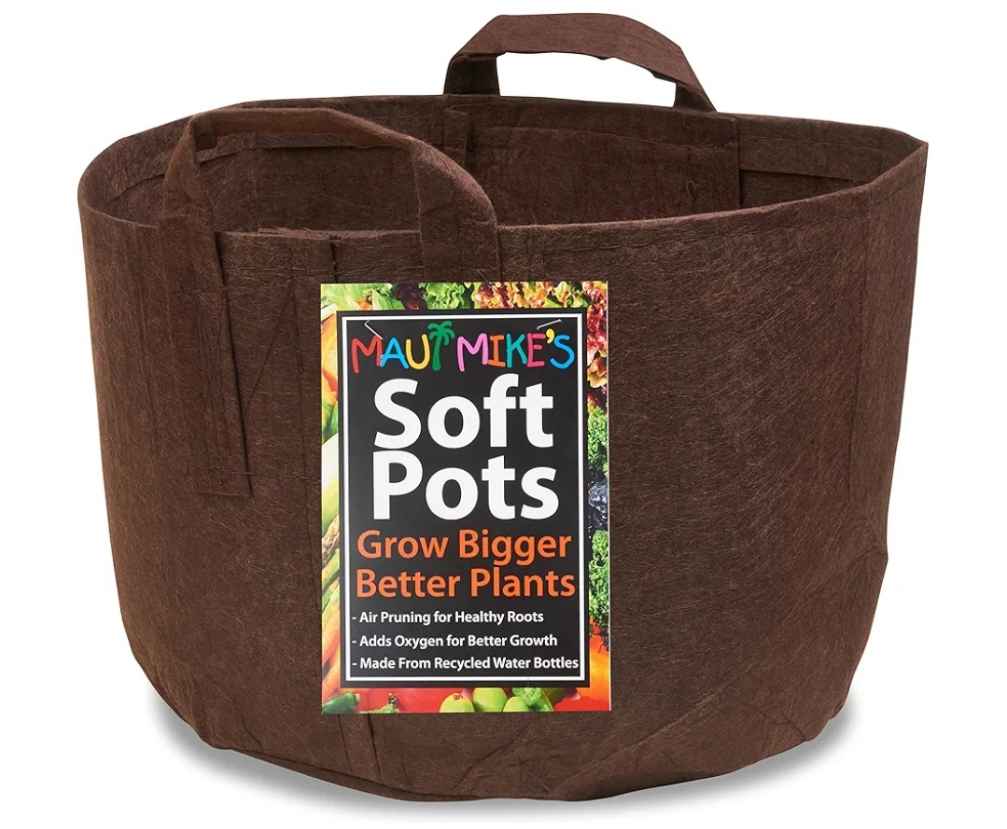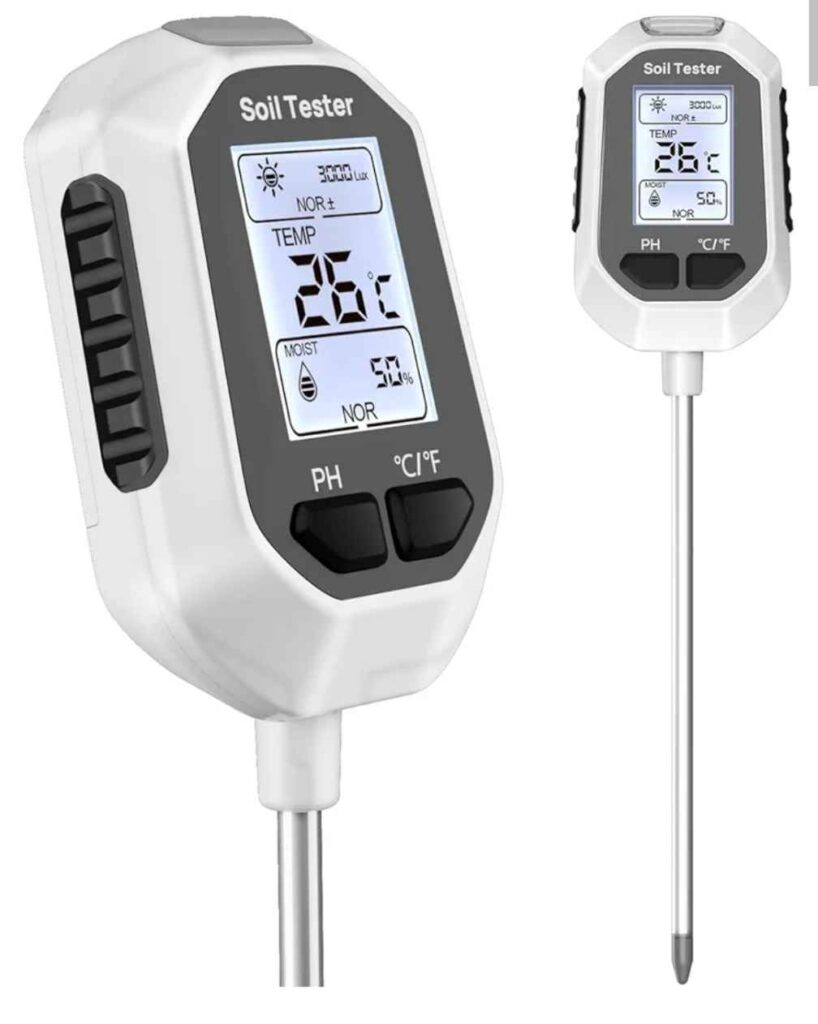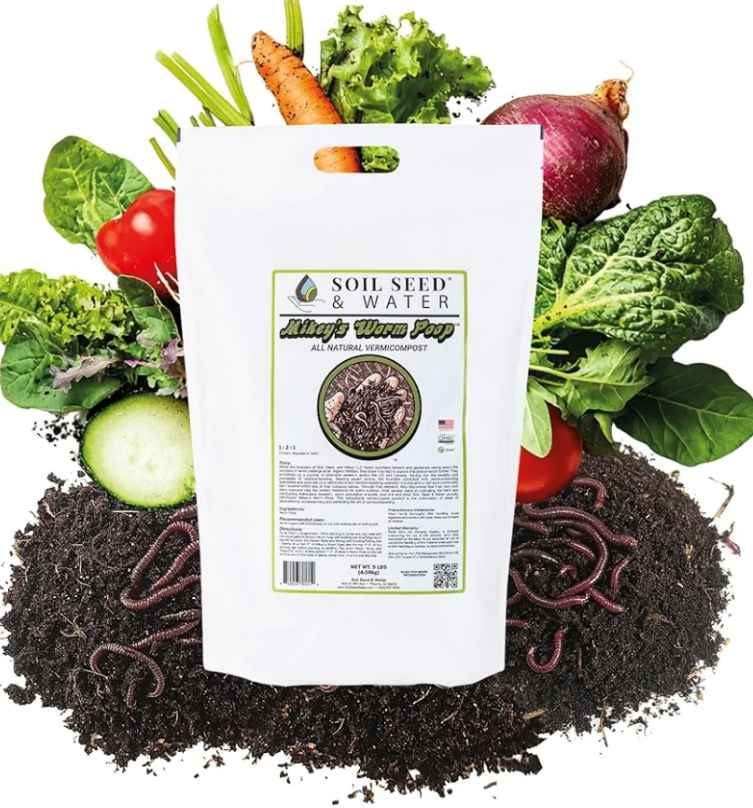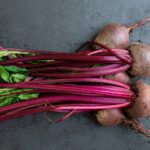Growing lettuce in containers is an excellent option if you’re new to gardening. Lettuce is a fast-growing, easy-to-care-for crop, making it perfect for beginners. Whether you have a large outdoor garden or just a small space, using containers allows you to grow fresh, crisp leaves at home. The correct container, filled with potting soil, is all you need to start. You can plant seeds directly into the container, and with proper care, you’ll be rewarded with a bountiful harvest of salad greens.
Also, read my guide on:
Vegetable Container Gardening: A Step-by-Step Guide
Growing lettuce in containers is super low cost and doesn’t require much space, making it a great way to enjoy fresh produce without the hassle of maintaining a large garden. You can enjoy growing your lettuce and other salad greens in small areas. Just ensure you provide the proper care by keeping the plants in a spot with enough sunlight and regularly watering them. The ease of planting, caring, and harvesting makes container gardening a rewarding and simple way to grow healthy greens.
Lettuce is a fantastic and fast-growing choice whether you’re looking for a small gardening project or a way to grow your food in a container garden. With minimal effort, you can enjoy fresh lettuce that tastes better than anything you can buy at the store.
Benefits of Growing Lettuce in Containers
Growing lettuce in containers offers many benefits, especially if you want a simple and easy-to-harvest solution. Unlike traditional ground planting, containers allow you to elevate your lettuce, preventing pests like slugs from eating your crops. This method also helps keep the lettuce out of reach of overly hot weather during the summer, as you can move the containers to a more fabulous shade or a spot with full sun. Growing lettuce in containers can lead to a high yield, sometimes yielding the equivalent of what you’d find in 20 containers of store-bought lettuce for just a $5 investment in a seed packet.
Container gardening also makes it easier to care for your plants by giving you control over the height and location of your crops. If your lettuce is exclusively planted in a container, it’s much easier to move the container to different spots depending on sunlight or temperature. This flexibility can help you maximize your lettuce supply throughout the year. Plus, it’s one of the cheapest and easiest ways to grow fresh vegetables at home, offering a bountiful harvest without the need for ample space or fancy gardening equipment.
Overall, growing lettuce in containers is an excellent option for anyone, whether you have a small space or want to grow vegetables with minimal hassle. With just a bit of care, you can enjoy fresh, homegrown lettuce whenever needed, and it’s easier to manage than a traditional garden plot.
Selecting the Best Lettuce for Containers
When growing lettuce in containers, choosing the right variety for your needs is essential. There are several types of lettuce, each offering unique flavours and textures. For example, romaine and butterhead lettuce are known for their sturdy leaves and crunch, making them ideal for a salad foundation. They are also perfect for sandwiches or as a garnish in a hamburger bun. On the other hand, looseleaf lettuce is much more mild and herbaceous, often used in mixed greens or tossed into a salad bowl with a light vinaigrette.
Mesclun is an excellent option if you want a visually beautiful container garden. It combines young, tender leaves with different flavours and colours, perfect for garnishing or adding to salads. Romaine is often the top choice for those looking for a flavorful and crunchy option, especially for culinary use. If you’re looking for a variety that grows quickly and offers a mild taste, butterhead lettuce might be the best fit for you, as it creates a soft, crumbly texture that is great for salads or even as a wrap for a sandwich.
Choosing the right variety for your container ensures that your lettuce thrives and provides fresh, delicious greens for various dishes. Whether you prefer a crisp romaine or a delicate, mild butterhead, there’s a lettuce to suit every taste and need.
Selecting the Best Container for Your Lettuce
Choosing the correct container is essential for healthy growth when growing lettuce in containers. Containers with proper drainage are crucial to avoid lettuce plants sitting in soggy soil, which can stunt growth and lead to issues like root rot. Drainage holes allow excess water to escape, ensuring the soil remains moist but not waterlogged. For lettuce, containers made from stainless steel, wood planters, or terra cotta pots work well, but each has pros and cons. For example, wood planters offer good insulation but can retain moisture, while stainless steel containers are durable but might overheat in direct sunlight.
Container Size for Lettuce Growth
The size of the container is also important. For looseleaf lettuce, a small container that is about 6 inches deep and 12 inches wide will be sufficient, but for head lettuce, you’ll need a container that is 8-10 inches deep and 12-16 inches wide to allow the root systems enough space to grow. Fabric grow bags are a great option because they provide excellent drainage and allow air to reach the roots, making them perfect for growing lettuce. The key is to ensure that the container gives your plants enough room to grow without restricting their development.
Choosing the correct container ensures your lettuce grows well without facing problems like sitting in water or being too cramped. With the proper depth and space, your lettuce will have a better chance to thrive and produce a bountiful yield.
Growing Lettuce in Containers
Choosing the Right Potting Soil for Lettuce
When planting lettuce in containers, selecting the right soil is crucial for healthy growth. Lettuce seeds require well-draining, nutrient-rich soil to thrive. The best choice for container gardening is a high-quality potting mix, which is often lightweight and well-draining. This type of soil helps prevent the soil from becoming compacted, ensuring adequate drainage for the roots. Regular garden soil is not ideal because it can be too dense and may lead to poor water absorption, leading to root rot.
For optimal growth, the soil’s pH level should be between 6.0 and 7.0, which is slightly acidic to neutral. A good potting mix will balance the necessary nutrients for healthy lettuce growth. Vermiculite or perlite is often included to improve the soil structure. These materials help the soil retain moisture without becoming wet or soggy, which can inhibit proper water absorption and cause issues like a crust forming on the surface.
Using the best soil for your lettuce ensures that it stays moist but not too wet, preventing over-watering and providing a balanced growth environment. Choosing the right potting soil creates a healthy foundation for your lettuce to sow and grow, producing crisp, fresh greens.
Planting Lettuce Seeds in Pots
1- Decide on the type of lettuce you want to grow. Looseleaf lettuce is an excellent option for a shorter maturity time. If you prefer head lettuce, like romaine, be prepared for a longer growing period.
2- Select high-quality potting soil that is well-draining and rich in nutrients. This is essential for your lettuce to thrive and produce healthy leaves.
3- Gently sow the fresh seeds about 1/4 inch deep in the pot. For looseleaf lettuce, space the seeds about 4-6 inches apart. For head lettuce, space them 8 inches apart in rows.
4- Cover lightly with soil and water gently. Keep the soil moist, but avoid over-watering, which can cause the seeds to become soggy.
5- Place your container in full sun. Ensure the temperature suits the chosen lettuce variety significantly if you grow heat-tolerant types like romaine.
6- Once your lettuce sprouts, thin the seedlings to give them enough space to grow properly. This helps avoid overcrowding and promotes vigorous, healthy plants.
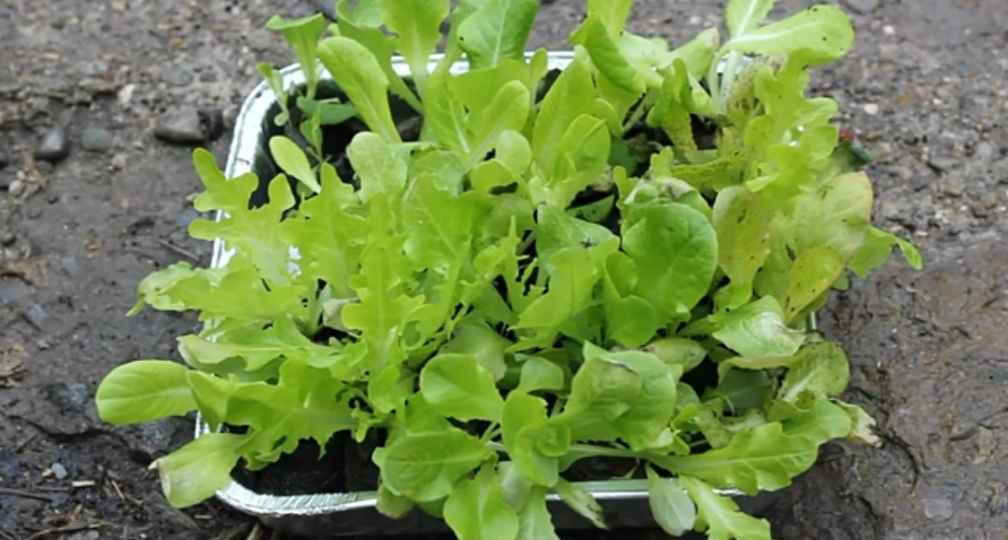
Tips for Growing Lettuce in Containers
Match the Lettuce Type to the Container
When growing lettuce in containers, it’s important to choose the right size for the variety you’re planting. For leaf lettuce, a shallow container about 6 inches deep and 12 inches wide works well since leaf lettuce has shallow roots. On the other hand, head lettuce requires a deeper container, typically 12 to 16 inches deep and 16 inches wide, to accommodate its more extensive root system. Ensuring your container is the right size will help maintain moisture and allow frequent watering.
For a Faster Harvest, Grow Leaf Lettuce
If you’re eager for a quick harvest, consider planting leaf lettuce. It grows quickly, and you can start clipping off leaves as soon as they are ready to eat, leaving the plant to continue growing. This is perfect for tender salads and baby leaves. Unlike head lettuce, which takes longer to mature, leaf lettuce allows you to harvest throughout the growing season, making it ideal for frequent salad servings.
Don’t Plant Lettuce Seeds; they are too Deep
Lettuce seeds are tiny and delicate, so avoid planting them too deep. Plant them about ¼ or ½ inch deep into the potting soil. Sprinkle them lightly over the top of the soil and cover them with a fine layer. This ensures that the seeds have enough light to germinate without being buried too deeply, which can hinder their growth.
Choose the Right Soil for Healthy Growth
Lettuce thrives in nitrogen-rich, well-draining soil. Use a pre-mixed potting soil or a potting mix that contains compost to provide the necessary nutrients for strong leaf growth. This soil type will help your lettuce grow healthy foliage and resist common pests and diseases affecting your plants.
Plant Lettuce When Temperatures Are Mild
Lettuce is a cool-season crop, so it grows best in spring and fall when temperatures are mild, around 65-75°F. Avoid planting in hot weather; lettuce can bolt and produce flowers instead of leaves when temperatures rise above 75°F. Planting in cooler weather helps your lettuce stay crisp and flavorful, ensuring a successful crop.
Water Regularly
Lettuce needs consistent moisture to produce tender, sweet leaves. If the soil dries out, your lettuce may turn harsh and bitter. Water the top inch of soil regularly, especially during warmer months when the soil tends to dry out faster. Ensuring your lettuce gets the right amount of water will keep it growing and tasting fresh.
Fertilize Every Other Week
To encourage healthy growth, use a water-soluble fertilizer every two weeks. A fertilizer high in nitrogen is ideal for lettuce, as it helps produce tender leaves. Follow the fertilizer directions carefully to avoid burning plants with too much fertilizer. Regular feeding will give your lettuce the nutrients it needs for strong and healthy growth.
Harvest Leaf Lettuce Every Few Days
For a steady supply of fresh lettuce, it’s essential to harvest leaf lettuce frequently. Use sharp scissors to clip off new leaves, leaving the smaller ones to keep growing. Harvesting larger leaves regularly will encourage new growth and ensure a continuous supply of fresh lettuce. Doing this in the morning is best when the leaves are freshest and have the highest water content.
Get the Light Right
Lettuce thrives in full sun for five to six hours each day. However, it can be sensitive to afternoon sun, especially in hot climates, which can cause it to wilt. Shade during the hottest part of the day helps protect the plant and keeps it from becoming stressed. Ensure your container gardening setup gives your lettuce the perfect light to grow healthy and vibrant.
Add Companion Plants
Companion plants like chives, cilantro, and garlic can help keep pests like aphids and slugs away from your lettuce. Planting mint nearby acts as a barrier plant to naturally deter these pests. Fresh herbs complement the flavour of your kitchen lettuce and promote a healthier, more productive garden by keeping unwanted pests at bay.
Look Out for Pests
Aphids and slugs are common pests that can damage your lettuce. Regularly check your plants for these pests, especially under the leaves. If you find them, you can remove the affected areas with neem oil or soapy water. For slugs, you can pluck them off by hand to protect your lettuce from being eaten.
Keep Planting New Lettuce
It’s important to keep planting new lettuce to ensure a continuous supply. Whether by sowing seeds or using transplants, plant new lettuce in new containers as older plants tire. This will help you maintain a steady harvest throughout the growing season without interruption.
Companion Plants for Lettuce
Growing lettuce in a container garden can be enhanced by adding companion plants that benefit each other. For example, planting chives, parsley, or cilantro alongside your lettuce can attract beneficial insects like ladybugs and lacewings. These insects help control pests such as aphids, which can damage your lettuce. Additionally, marigolds are known to repel pests, offering natural protection for your lettuce plants and helping to create a balanced environment in your garden.
Incorporating quick-growing vegetables like carrots or radishes can also benefit your lettuce. These plants have similar growing requirements and can help maximize space in your container garden. As fast-growing plants, they won’t compete for resources for long and will allow you to harvest both crops quickly. Moreover, these plants help improve soil quality, creating a diverse garden ecosystem that supports healthy growth and minimizes the risk of diseases.
Choosing companion plants that attract and repel the right insects and improve soil quality can create a more productive and efficient growing space for your lettuce. The right combination of plants helps maintain a balanced environment while boosting your harvest and making the most of your container garden.
Harvesting Lettuce
When harvesting lettuce, the timing and method depend on the variety and maturity of the plant. For looseleaf lettuce, you can begin harvesting as early as 30 days after germination by picking the outer leaves from the base of the plant. This allows the younger, newer leaves in the center to continue growing, giving you a sustained harvest throughout the season. This is a cut-and-come-again method, where you can repeatedly harvest the same plant, ensuring a steady supply of fresh greens.
If you’re growing head lettuce, wait until the heads are fully mature and plump, typically around 70-80 days. Once the head is solid and the leaves are firm, you can cut the entire head at the base. Be careful not to leave too much of the plant in the soil to avoid stunted growth or a bitter flavour from any remaining stems. Harvest in the morning for the best flavour when the lettuce is crisp, and the flavour is at its peak.
If you want to extend your harvest season, consider planting different types of lettuce with varying maturity times. This ensures that you always have harvestable lettuce available, even when one batch has been picked. If a plant is past its prime, replace it with a new crop to keep your container garden productive.
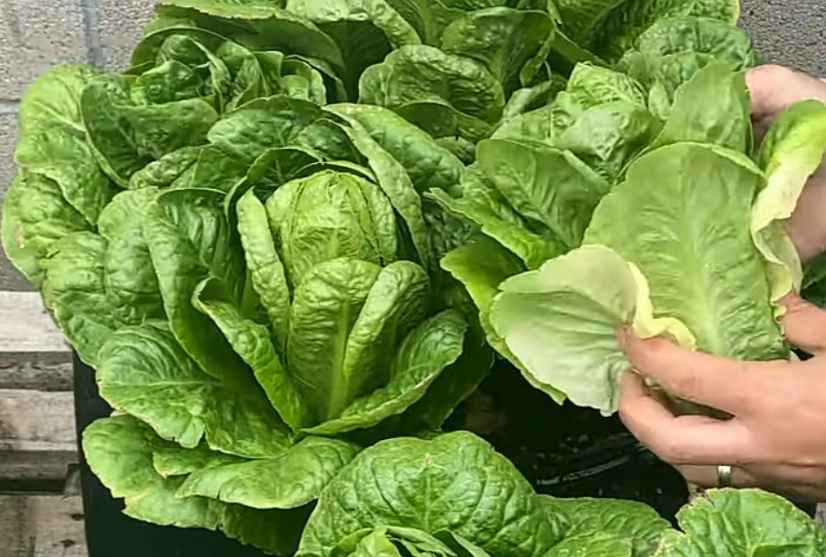
Also, read my guide on:
Growing Green Beans in Containers
Final Observations
Growing lettuce in containers is a rewarding and easy way to enjoy fresh, homegrown greens without requiring much space. By choosing the correct container, soil, and companion plants, you can ensure your lettuce thrives throughout the season. Container gardening offers flexibility and efficiency, whether you prefer leaf lettuce for quick harvests or head lettuce for an entire crop. With some care, you’ll have a continuous supply of crisp, flavorful lettuce ready to harvest.
FAQs
Q- Does lettuce grow well in containers?
Yes, lettuce grows well in containers with well-draining soil, proper sunlight, and regular watering.
Q- Does lettuce need full sun?
Lettuce needs 5-6 hours of sunlight daily, but it can tolerate some shade, especially during hot weather.
Q- Will lettuce regrow after cutting?
Yes, leaf lettuce can regrow after cutting, mainly if you use the cut-and-come-again method, leaving the inner leaves to continue growing.
Q- How long does lettuce take to grow in pots?
Depending on the variety and growing conditions, lettuce typically takes 30-70 days to grow in pots. Leaf lettuce grows faster, while head lettuce takes longer.

